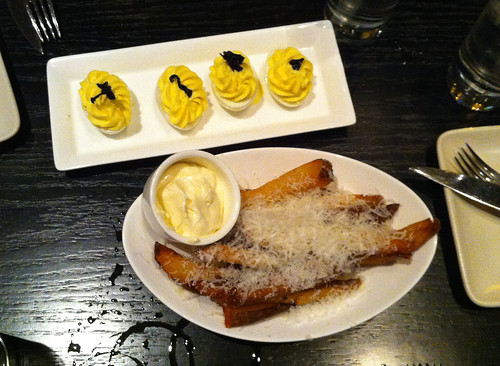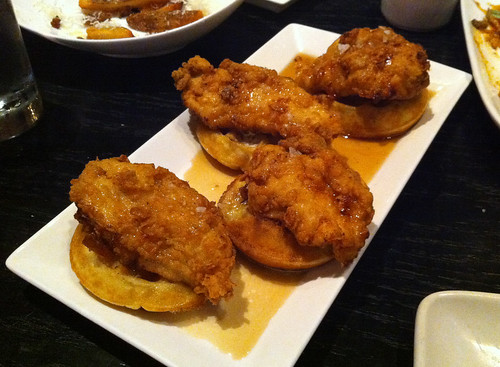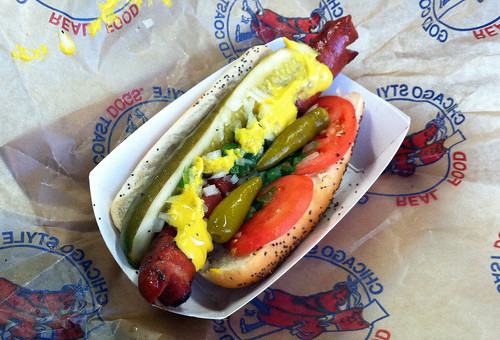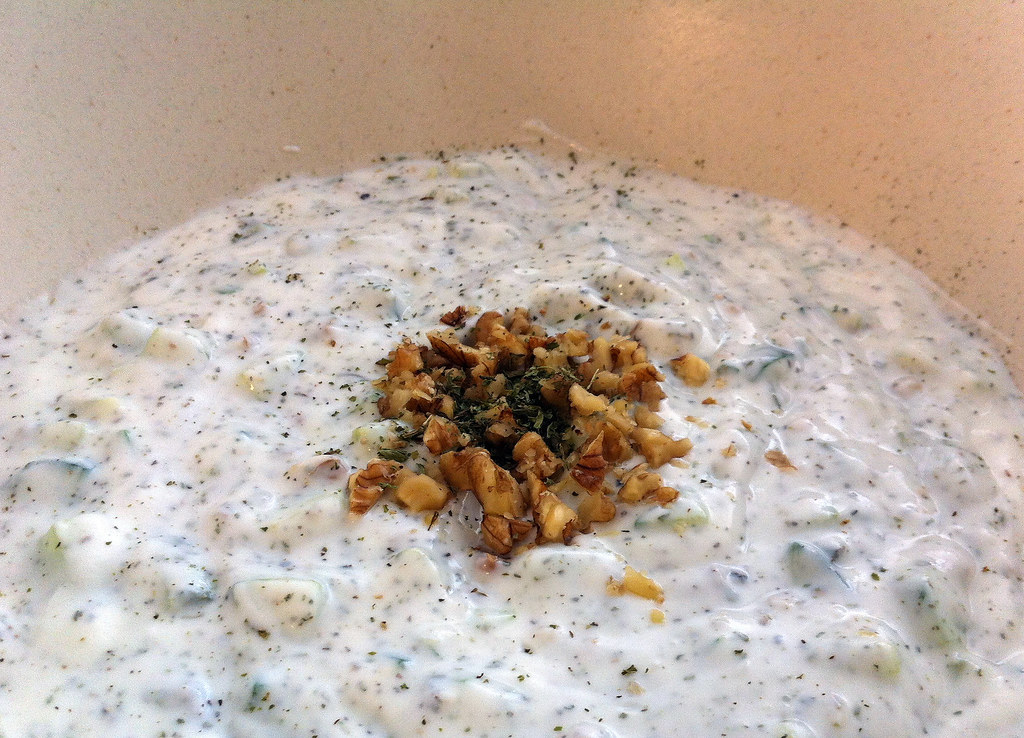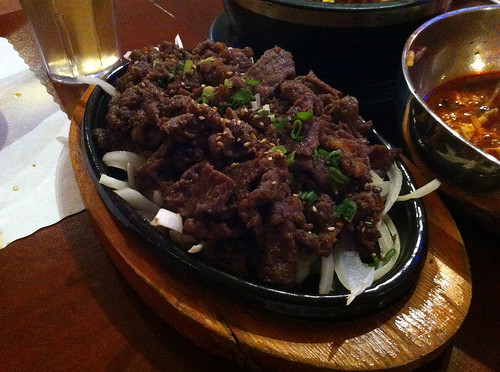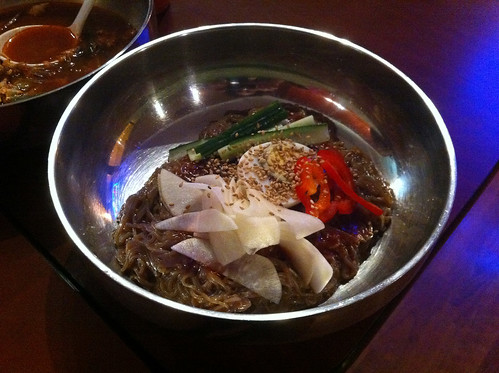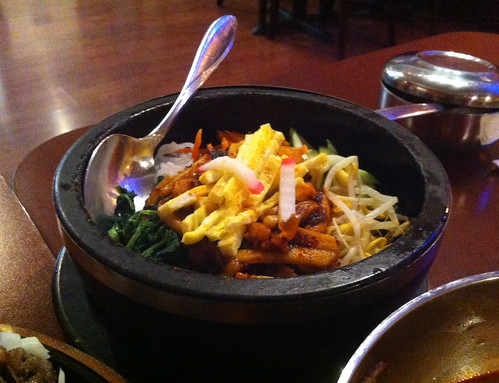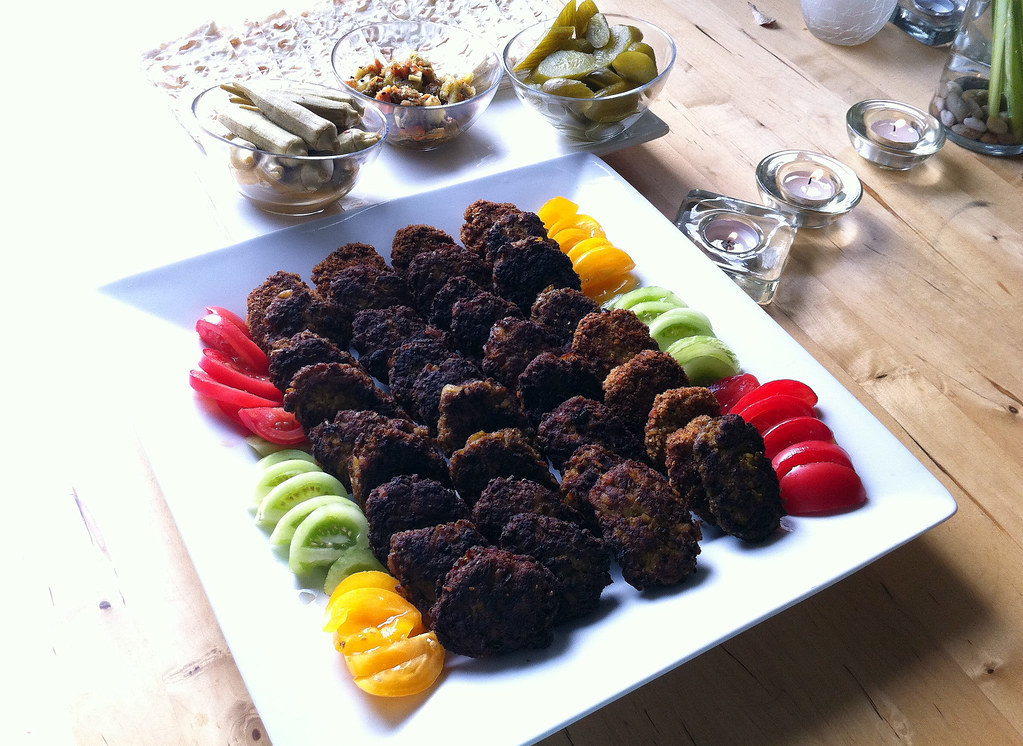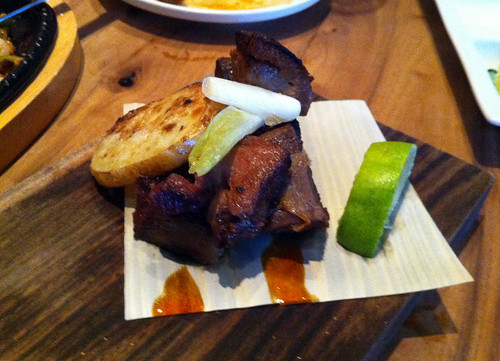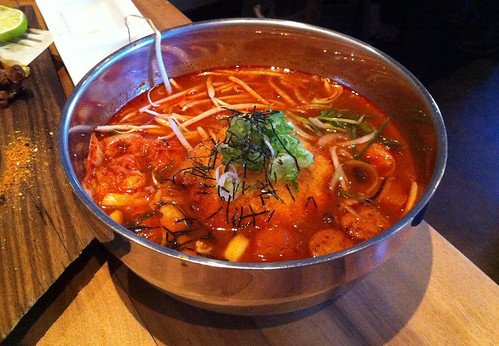I’ve always associated two things with Chicago: The 1980’s sitcom Perfect Strangers (Balki!) and the enormous O’Hare International Airport, where I’ve had many a stopover (and hot dog). Last year, I spent a quick 48 hours in the city for a conference and while most of my time was spent indoors, I got some good eating and sightseeing packed in too.
On the Near North Side of Chicago lies Sable, a sleek, no-nonsense New American restaurant serving up classic cuisine with a Midwestern vibe. Salad? What’s that? At Sable, my colleagues and I ate meat. And fried things. Delicious, delicious fried things. I also sampled my first-ever deviled eggs and fell in love. Granted, they were truffled and garnished with trumpet mushrooms, but man were these creamy and decadent. We also split a plate of duck fat steak fries doused with pecorino romano alongside white truffle aioli, for good measure.
Since indulgence appeared to be the theme of this meal, I had the buttermilk fried chicken waffles with bourbon maple syrup as my entree. This dish was a little over the top for my taste, but I can’t say I wasn’t warned. Sable isn’t playing around, and while my dinner was delicious, I found myself craving a plate of greens afterward.
Chicago is an architectural gem, and during my second evening in town, I ducked out of the conference for a quick boat tour that guided our group through the Chicago River and highlighted the city’s historical buildings like the Tribune Tower, the Wrigley Building, and Willis (Sears) Tower. I learned more than I could absorb, but I do remember learning that the reason why parts of Chicago smell like chocolate is because of the Blommer Chocolate Company’s factory alongside the river.
My trip was over almost as soon as it had begun, but I couldn’t leave without sampling an infamous Chicago hot dog. I stopped at Gold Coast Dogs at O’Hare International Airport and ordered a beef hot dog with all the usual toppings, including what makes a Chicago-style hot dog unique: celery salt and pickled sport peppers. Not bad at all for a quick airport dinner.
This trip was so quick that I didn’t make it to many of the sights I’d wanted to see or any restaurants that I’d wanted to try, like Alinea and Hot Dougs. I barely scratched the surface and if this trip was any indication, there’s still lots and lots of ground to cover.

